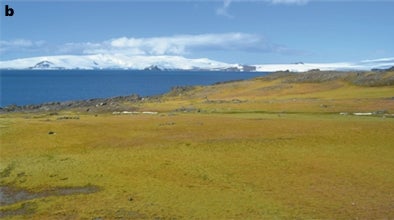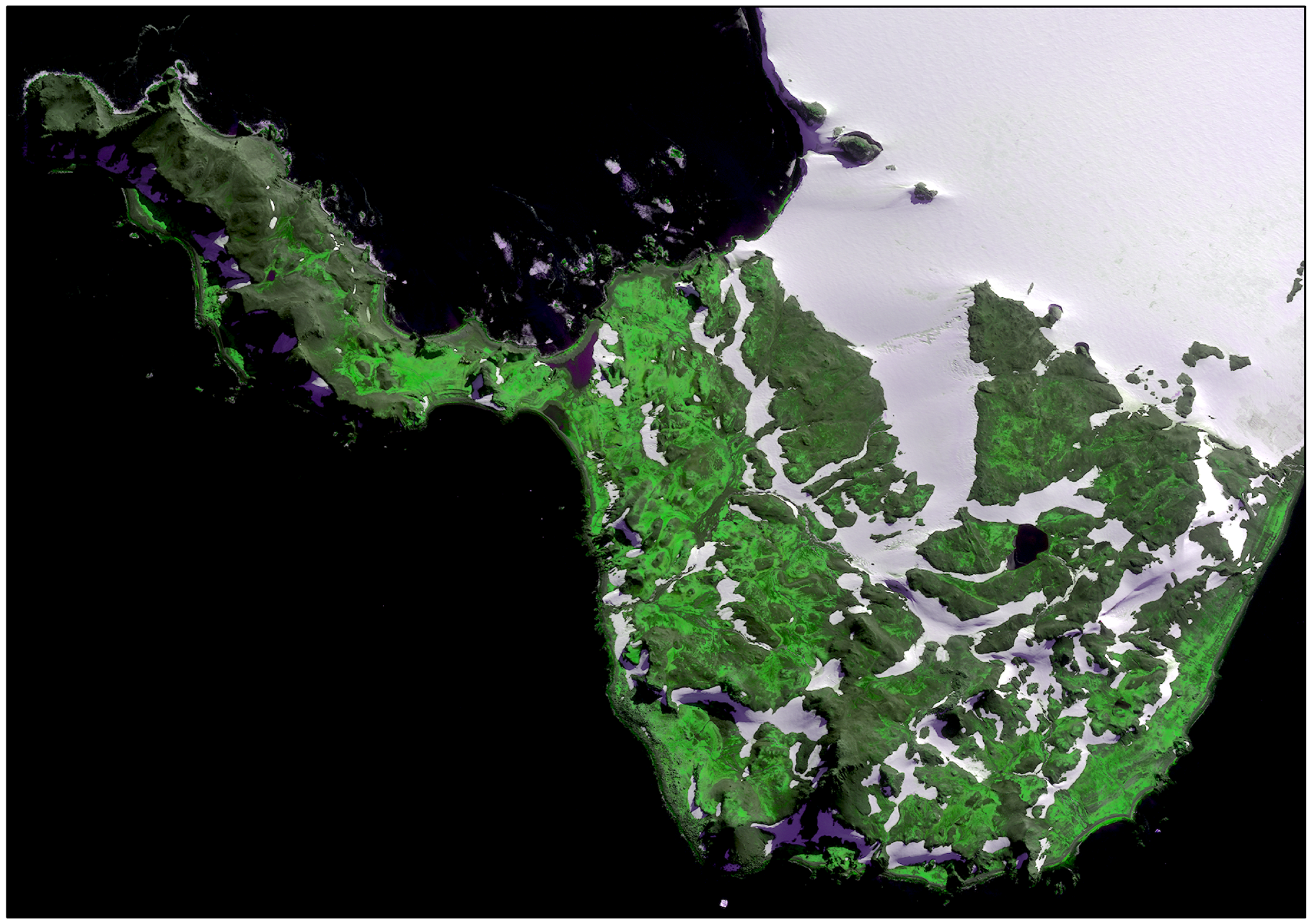Satellite images show Antarctica is turning ‘green’ faster than previously thought
Satellite imagery shows that vegetation on the peninsula grew from less than one square kilometres in 1986 to almost 12sqkm by 2021
Your support helps us to tell the story
From reproductive rights to climate change to Big Tech, The Independent is on the ground when the story is developing. Whether it's investigating the financials of Elon Musk's pro-Trump PAC or producing our latest documentary, 'The A Word', which shines a light on the American women fighting for reproductive rights, we know how important it is to parse out the facts from the messaging.
At such a critical moment in US history, we need reporters on the ground. Your donation allows us to keep sending journalists to speak to both sides of the story.
The Independent is trusted by Americans across the entire political spectrum. And unlike many other quality news outlets, we choose not to lock Americans out of our reporting and analysis with paywalls. We believe quality journalism should be available to everyone, paid for by those who can afford it.
Your support makes all the difference.The icy landscapes of Antarctica are turning green at a faster rate than previously thought, researchers warned, a change that could spark dramatic shifts in its fragile ecosystems.
Plant cover on the northern Antarctic Peninsula expanded more than 12 times over the past 35 years, a new study has found.
Satellite imagery analysis by researchers shows that vegetation on the peninsula grew from less than one square kilometres in 1986 to almost 12sqkm by 2021.
The rate of greening accelerated in recent years, when the Earth observed some of the hottest global temperatures and glaciers melted at a record rate.
Between 2016 and 2021, the Antarctic Peninsula saw a 30 per cent increase in vegetation, the research, published in Nature Geoscience, said. Researchers believe it is a linked to reduced sea ice cover due to increasing global temperatures,
There is a “clear but nonlinear trend towards a greater area of vegetation cover across the Antarctic Peninsula in recent decades”, the study said.
Warmer temperatures and increased precipitation are creating a more favourable condition for mosses, which now dominate these newly vegetated areas.

Mosses play a key role in converting rocky surfaces into soil. This could lead to more diverse plant life in the future, potentially including invasive species that could outcompete native Antarctic plants.
The authors of the study say that this greening trend, a result of hotter global temperatures, could have complex repercussions for the world.
“If our study highlights yet another ‘canary in the coalmine’, then we’re fast running out of canaries,” Dr Thomas Roland, from the University of Exeter, said.
“Our findings confirm that the influence of anthropogenic (human-induced) climate change has no limit in its reach. Even on the Antarctic Peninsula, this most extreme, remote and isolated ‘wilderness’ region, the landscape is changing and these effects are visible from space,” he said.
The findings show mosses have been expanding their range across the peninsula, contributing to soil formation, thus enabling the potential colonisation of other species in the region.
“Many of the plants growing in this most extreme of environments are actually capable of colonising bare rock surfaces,” Dr Olly Bartlett, from the University of Hertfordshire, said.
“One of the big concerns here is that this dramatic increase in vegetation will further develop and create new soils across the region, providing a medium in which non-native, and potentially invasive species can become established.”
These changes could disrupt the fragile balance of Antarctic ecosystems, leading to biodiversity loss as new species outcompete native plants, the study warns.
Researchers analysed 35 years of satellite imagery data from NASA's Landsat archive, using Google Earth Engine to study the spread of plant life across Antarctica.
They focused on specific measures of vegetation growth – specifically the Normalised Difference Vegetation Index (NDVI) and Tasseled Cap Greenness (TCG) – to monitor changes in vegetation cover.

The data revealed that the greening wasn’t just happening in patches, but steadily across the western Antarctic Peninsula, stretching from around 68.5 degrees south all the way up to the northern South Shetland Islands.
The expansion of vegetation in the Antarctic Peninsula is part of a broader global trend observed in other cold regions, particularly the Arctic, where warming temperatures have also triggered increased plant growth.
“These findings add to our understanding of how even the most extreme environments are not immune to the consequences of global warming,” the study said, calling for continued research and biosecurity measures to protect Antarctica’s fragile ecosystems.
The greening of Antarctica is more than just a visual change, it has profound ecological implications. As plant life continues to expand, it will alter the region’s ecosystem dynamics, potentially affecting soil composition, carbon cycles, and local food webs.
There is also the potential for human activity, such as tourism and scientific expeditions, to inadvertently introduce non-native species, further complicating the region’s ecological balance.
Last year was the warmest year on record, with unprecedented warming observed in both polar regions. Antarctic sea ice reached record low levels during this time, creating conditions conducive to these vegetation shifts, according to World Meteorological Organisation (WMO).
Researchers are calling for increased monitoring of biological changes in polar regions, not just ice loss.
“Ultimately, a clear understanding of the nature and future of biological responses across the Antarctic Peninsula to Antarctic climate change is limited by a relative lack of long-term data... we anticipate that future work can be informed by further ground-based validation and projection modelling... This work has the potential to inform effective and essential biosecurity governance,” the study said.

Join our commenting forum
Join thought-provoking conversations, follow other Independent readers and see their replies
Comments